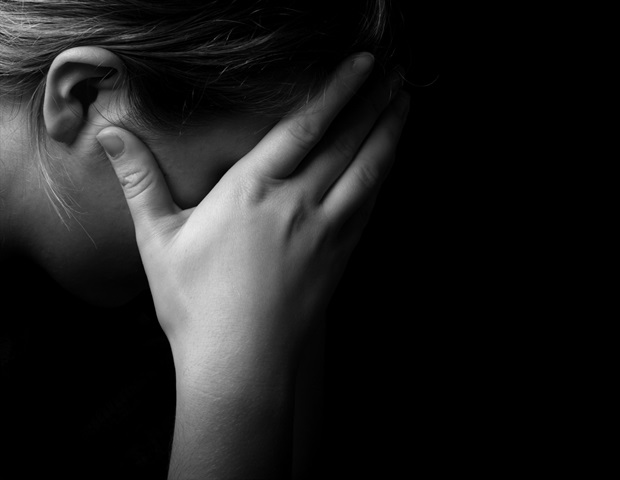
In an evolving health landscape, emerging research continues to highlight concerns that could impact everyday wellbeing. Here’s the key update you should know about:
Researchers led by Dr. Roberto Goya-Maldonado at the University Medical Center Göttingen have identified a rapid physiological marker that predicts which patients with major depression will respond to magnetic brain stimulation therapy. The peer-reviewed research article, published in Brain Medicine, found that patients whose heart rates slowed within 45 seconds of starting treatment showed significantly greater improvement in depressive symptoms six weeks later.
Uncovering real-time treatment indicators
The research team monitored 75 patients with major depressive disorder during accelerated intermittent theta burst stimulation (iTBS), an advanced form of transcranial magnetic stimulation. Using continuous electrocardiogram monitoring, they tracked beat-to-beat heart rate changes from the moment stimulation began.
“Patients who showed greater heart rate deceleration within the first 45 seconds of initial stimulation demonstrated superior clinical improvement at the six-week follow-up,” the researchers reported. This relationship held only for active stimulation, not sham treatment, suggesting the cardiac response reflects meaningful engagement of mood-regulating brain circuits.
Challenging personalization assumptions
The study also tested whether personalizing brain stimulation sites based on individual resting-state functional connectivity patterns would enhance treatment outcomes. Surprisingly, this sophisticated neuroimaging approach showed no advantage over standard positioning at the F3 location of the 10-20 EEG system on the scalp.
Despite using advanced MRI scans to identify each patient’s optimal stimulation target based on connectivity between brain regions, personalized targeting yielded equivalent alleviation of depressive symptoms to the simpler standardized approach. Implementation challenges may have contributed to this finding, as actual stimulation sites sometimes deviated by more than 10 millimeters from calculated targets.
Mechanisms linking brain and heart
The cardiac deceleration likely reflects successful activation of the frontal-vagal pathway, a neural circuit connecting the prefrontal cortex to the heart through the subgenual anterior cingulate cortex and brainstem. When brain stimulation effectively engages mood-regulatory networks, it triggers measurable changes in heart rhythm through this pathway.
However, the relationship proved complex. While heart rate deceleration predicted long-term improvement, increases in heart rate variability during stimulation paradoxically correlated with poorer one-week outcomes. This unexpected finding highlights gaps in understanding the temporal dynamics of brain-heart interactions during neuromodulation.
Practical applications for clinical practice
The findings suggest that simple cardiac monitoring during initial treatment sessions could help clinicians optimize therapy. Rather than relying solely on anatomical landmarks or expensive neuroimaging, practitioners could adjust stimulation parameters based on real-time physiological feedback.
“If validated, cardiac biomarkers could enable real-time optimization during treatment sessions,” noted Dr. Julio Licinio and Dr. Helen Mayberg in an accompanying editorial. They emphasized how clinicians could adjust coil positioning or stimulation intensity based on immediate cardiac responses, potentially improving response rates that currently range from 30-50% with standard protocols.
Addressing treatment-resistant depression
Major depressive disorder affects up to 20% of the population, with approximately one-third of patients failing to respond to conventional antidepressant medications. For these treatment-resistant cases, brain stimulation offers an important alternative, though outcomes remain highly variable.
The accelerated iTBS protocol used in this study delivered 36,000 magnetic pulses over two weeks, with patients receiving four daily sessions. This intensive approach aims to produce faster therapeutic effects than traditional protocols spanning several weeks.
Future directions and limitations
Several questions remain for future investigation. Will combining cardiac monitoring with other biomarker approaches further improve prediction accuracy? Can real-time cardiac feedback guide parameter adjustments during treatment sessions? How do individual differences in autonomic function influence these relationships?
The crossover design, while strengthening internal validity, complicated interpretation of longer-term effects. Future parallel-group studies could clarify optimal timing for assessing treatment response and whether benefits of personalized targeting emerge at specific therapeutic windows.
This peer-reviewed research represents a significant advance in precision psychiatry, offering new insights into brain stimulation mechanisms through rigorous experimental investigation. The findings challenge existing paradigms about personalized targeting while providing critical evidence for cardiac biomarkers in depression treatment. By employing innovative continuous monitoring approaches, the research team has generated data that not only advances fundamental knowledge but also suggests practical applications in clinical settings. The reproducibility and validation of these findings through the peer-review process ensures their reliability and positions them as a foundation for future investigations. This work exemplifies how cutting-edge research can bridge the gap between basic neuroscience and translational applications, potentially impacting thousands of patients with treatment-resistant depression in the coming years.
Source:
Journal reference:
Wilkening, J., et al. (2025) Heart rate modulation and clinical improvement in major depression: A randomized clinical trial with accelerated intermittent theta burst stimulation. Brain Medicine. doi.org/10.61373/bm025a.0113

